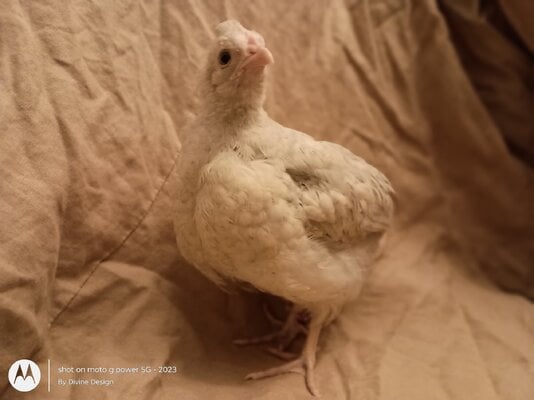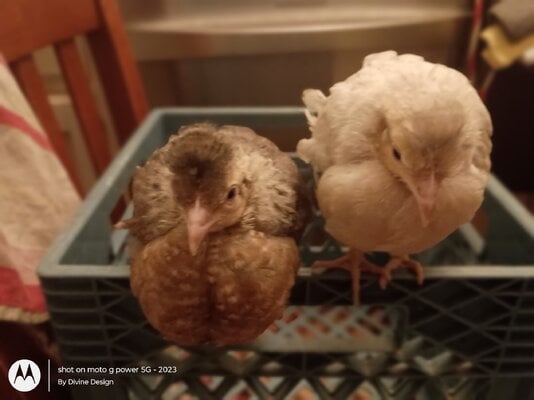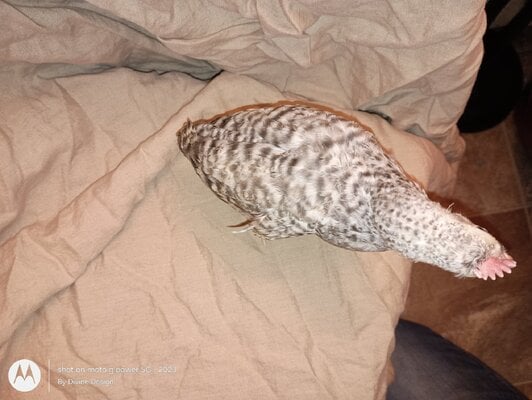- Apr 7, 2022
- 1,009
- 927
- 241
Hi. I am quite late to the scene regarding Cream Legbars and breeding but have been scouring the archives to read anything I can legbar related. Mainly the standard and the specific nuances working with this breed.
I have come to realize two things in my months of research:
1- The official breed clubs website and Facebook group are down. The site is literally non functional and all the valuable PDFs and information contained within in it are in limbo at this time. The FB group is quite stagnant. From what I understand the club was having issues with member numbers and change of chair persons due to life circumstances changing. I think they are supposed to have a new election but I have no clue when or if that will happen. I had saved all the valuable information and PDFs from the breed club on my phone but when I had to switch phones recently, unfortunately those files didn't transfer to my new device and now I have no way to get them back * Does anyone here happen to have them and would be willing to email them to me?
* Does anyone here happen to have them and would be willing to email them to me?
2- The two "official" Legbar threads here on BYC were started back in 2012 and both of them haven't had activity on them for a quite a while. (Up until I posted on them a couple days ago and I believe only two others have said hello since)
Due to the above I am posting this thread to find current breeders that would like to collaborate on their breeding efforts with this breed.
I have very specific questions about working with this breed and would love to hear from breeders who have already been working with them so I can learn from their experiences.
I have tail issues in one of the groups I acquired this year. Too high, too long, and pinched. I would like to breed away from that.
I also would like to get insight on colors and type and compensation Mating when it comes to this color variety.
I know with Faverolles a lot of breeders keep dual lines. Meaning a male and a female specific line for the different colors. I have read this is done because they believe you can't breed the perfect male with certain female color and vice versa. I was wondering if people have run into this issue regarding Legbars? I would have assumed that you could get correct males and females within the same line if selected for properly but maybe that assumption is wrong and you do need two separate specific color lines I honestly don't know. Anyone care to weigh in?
I honestly don't know. Anyone care to weigh in?
I also currently have a huge range of color on the cockerels I have here. I have a couple that have little to no red at all and are very white. Too white- I would think. Then I have a cockerel with definite and distinct barring with minimal red and then the youngest cockerel had definite barring and so far no red at all. Does red show up later?
Should I worry more about type at this point and not color?
I am currently working on a line of Cream and Opal Legbar. If anyone here is specifically working with Opal I would love to hear from you!
I have come to realize two things in my months of research:
1- The official breed clubs website and Facebook group are down. The site is literally non functional and all the valuable PDFs and information contained within in it are in limbo at this time. The FB group is quite stagnant. From what I understand the club was having issues with member numbers and change of chair persons due to life circumstances changing. I think they are supposed to have a new election but I have no clue when or if that will happen. I had saved all the valuable information and PDFs from the breed club on my phone but when I had to switch phones recently, unfortunately those files didn't transfer to my new device and now I have no way to get them back
2- The two "official" Legbar threads here on BYC were started back in 2012 and both of them haven't had activity on them for a quite a while. (Up until I posted on them a couple days ago and I believe only two others have said hello since)
Due to the above I am posting this thread to find current breeders that would like to collaborate on their breeding efforts with this breed.
I have very specific questions about working with this breed and would love to hear from breeders who have already been working with them so I can learn from their experiences.
I have tail issues in one of the groups I acquired this year. Too high, too long, and pinched. I would like to breed away from that.
I also would like to get insight on colors and type and compensation Mating when it comes to this color variety.
I know with Faverolles a lot of breeders keep dual lines. Meaning a male and a female specific line for the different colors. I have read this is done because they believe you can't breed the perfect male with certain female color and vice versa. I was wondering if people have run into this issue regarding Legbars? I would have assumed that you could get correct males and females within the same line if selected for properly but maybe that assumption is wrong and you do need two separate specific color lines
I also currently have a huge range of color on the cockerels I have here. I have a couple that have little to no red at all and are very white. Too white- I would think. Then I have a cockerel with definite and distinct barring with minimal red and then the youngest cockerel had definite barring and so far no red at all. Does red show up later?
Should I worry more about type at this point and not color?
I am currently working on a line of Cream and Opal Legbar. If anyone here is specifically working with Opal I would love to hear from you!
Attachments
-
 IMG_20241101_225143386.jpg649.4 KB · Views: 273
IMG_20241101_225143386.jpg649.4 KB · Views: 273 -
 IMG_20241101_224321643.jpg256.2 KB · Views: 26
IMG_20241101_224321643.jpg256.2 KB · Views: 26 -
 IMG_20241101_225117630.jpg305.2 KB · Views: 25
IMG_20241101_225117630.jpg305.2 KB · Views: 25 -
 IMG_20241101_223933471.jpg583.7 KB · Views: 23
IMG_20241101_223933471.jpg583.7 KB · Views: 23 -
 IMG_20241101_224725124.jpg320.1 KB · Views: 25
IMG_20241101_224725124.jpg320.1 KB · Views: 25 -
 IMG_20241101_224315699.jpg647.9 KB · Views: 30
IMG_20241101_224315699.jpg647.9 KB · Views: 30 -
 IMG_20241030_175842798.jpg862.2 KB · Views: 24
IMG_20241030_175842798.jpg862.2 KB · Views: 24 -
 IMG_20241101_223855147_PORTRAIT.jpg211.9 KB · Views: 24
IMG_20241101_223855147_PORTRAIT.jpg211.9 KB · Views: 24 -
 IMG_20241028_214830341_PORTRAIT.jpg197.3 KB · Views: 21
IMG_20241028_214830341_PORTRAIT.jpg197.3 KB · Views: 21 -
 IMG_20241030_230742947_PORTRAIT.jpg456.5 KB · Views: 17
IMG_20241030_230742947_PORTRAIT.jpg456.5 KB · Views: 17 -
 IMG_20241101_225152745.jpg583.7 KB · Views: 20
IMG_20241101_225152745.jpg583.7 KB · Views: 20 -
 IMG_20241028_221250341_PORTRAIT.jpg150.1 KB · Views: 24
IMG_20241028_221250341_PORTRAIT.jpg150.1 KB · Views: 24
Last edited:






